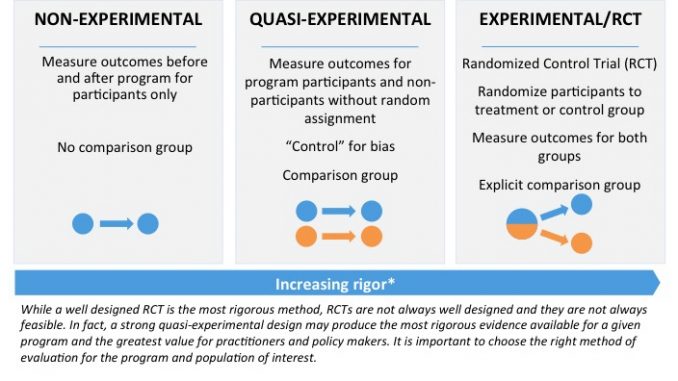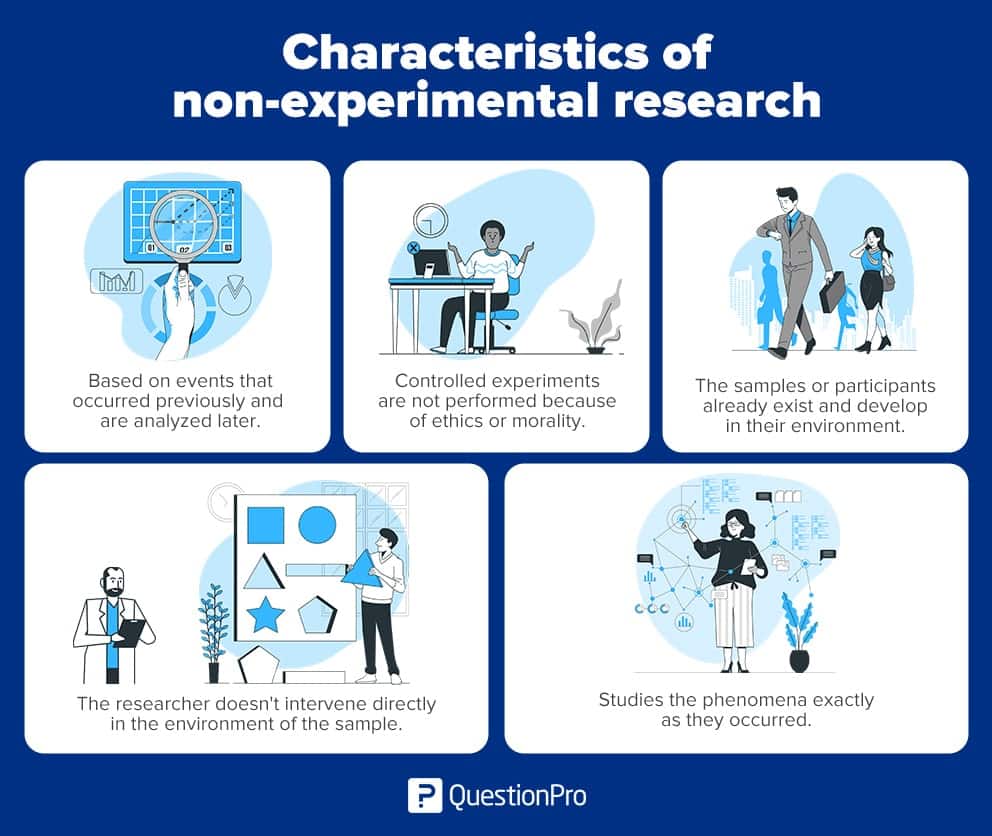Explain Different Types of Non Experimental Research Design
Here we explain three of the most common types. Non-experimental research design.

20 Differences Between Randomized Controlled Trial Rct And Quasi Experimental Study Design Public Health Notes
The Quasi-experimental design refers to the partial design and it is similar to true experimental design.

. There are several types of non-experimental research designs including correlational descriptive and historical. Before-and-after without control design. It is a theory-based design method which is created by gathering analyzing and presenting collected data.
Different Types of Research Design. 01092022 Create an account. The research has little to no ability to influence the variables at work and therefore the research cannot be considered a controlled experiment.
In true experiment design the participants of the group are randomly assigned. Non-experimental research designs are carried out in natural settings it does not involve manipulation of the situation event circumstances or people. This design is best suited in controlled settings for example labs.
Learn the differences between non-experimental and experimental research and explore the advantages and disadvantages of each type of scientific endeavor. Through this type of research design we can. Informal experimental designs are those designs that normally use a less sophisticated form of analysis based on differences in magnitudes whereas formal experimental designs offer relatively more control and use precise statistical procedures for analysis.
The design assumes random assignment of subjects and random assignment to groups A and C. A good research design is one that is capable of measuring any odd events in any circumstances. It constitutes the blueprint for the collection measurement and analysis of data.
The Various Types of the Experiment Research Design. A good research design is ethical research design. Case Study Research Design.
Nonequivalent groups design regression discontinuity and natural experiments. A good research design is one that helps an investigator avoid making mistaken conclusions. A good research design is one that is capable of obtaining the most reliable and valid data.
If we begin with the Pretest-Posttest Design with Nonequivalent Groups and then take away the comparison group we are left with the One Group Pretest-Posttest Design. Nonequivalent groups design In nonequivalent group design the researcher chooses existing groups that appear similar but where only one of the groups experiences the treatment. Pre-experimental quasi-experimental and true experimental designs are the three basic kinds of experimental research designs.
A quasi-experimental design is similar to the true experimental design but there is a difference between the two. It tries to investigate cause and affect associations where causes could be manipulated to generate different types of effects. A group or various groups are kept under observation after implementing factors of cause and effect.
The research design refers to the overall strategy that you choose to integrate the different components of the study in a coherent and logical way thereby ensuring you will effectively address the research problem. You can further break down the types of research design into five categories. Non- experimental research designs is a type of study that is essentially uncontrolled.
Experimental research is Quantitative methods along with a scientific approach in which a set of variables remains constant. The 10 Types of Research Design are. An experimental research design requires creating a process for testing a.
An experimental research design is a research design that helps in measuring the influence of the independent variable on the dependent variable. Mixed Methods Research Design. Three examples of non-experimental designs are the one group pretest-posttest design the static group comparison and the cross-sectional survey design.
In general experimental research is high in internal validity correlational research is low in internal validity and quasi-experimental research is in between. The way you classify research subjects based on conditions or groups determines the type of research design you should use. Survey case studies correlational studies comparative studies and descriptive studies are some of the examples of non-experimental research design.
Youll conduct this research to understand whether further. Non-experimental research on the other hand can be just as interesting but you cannot draw the same conclusions from it as you can with experimental research. This type of research is subdivided into two types.
In a descriptive design a researcher is solely interested in describing the situation or case under their research study. So every unit has an equal chance of getting into the experimental group. For each of the following studies decide which type of research design it is and explain why.
The first and basic kind of experimental design is the pre-experimental design in. Looks towards improving efficiency in a particular productive sector through the improvement of processes or machinery related to said productive processes. Non-experimental research is usually descriptive or correlational which means that you are either describing a situation or phenomenon simply as it stands or you are describing a relationship between two or more.
A special type of experimental design is determined by the degree to which the researcher assigns subjects to the different conditions and groups 4. Some of the different variations of the experimental research design include Quasi-experimental research design True-experimental research design and Pre-experimental research design.

Non Experimental Research What It Is Types Tips Questionpro


No comments for "Explain Different Types of Non Experimental Research Design"
Post a Comment